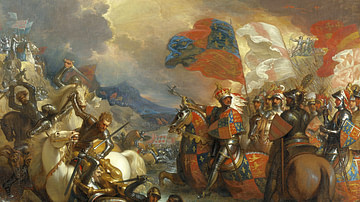Review

| Rating: | |
|---|---|
| Title: | Ancient Christianities: The First Five Hundred Years |
| Author: | Paula Fredriksen |
| Audience: | University |
| Difficulty: | Easy |
| Publisher: | Princeton University Press |
| Published: | 2024 |
| Pages: | 288 |
Paula Fredriksen is an eminent figure in the field of early Christianity and ancient Judaism, and her knowledge of the historical and religious circumstances surrounding these faiths is well-established. Her writings are essential reading for those curious about how religion, history, and culture interacted in the ancient Mediterranean.
Ancient Christianities: The First Five Hundred Years by Paula Fredriksen conveys precisely written ideas from the result of meticulously analyzing a great deal of historical data. Different branches of Christianity emerged simultaneously in reaction to a flourishing Judaism and an established religion that was not dead but was instead referred to as "paganism" by Christians. By delving into the subject of ancient "Christianities," new light is shown on the religious practices of the ancient cultures of the Mediterranean and the Middle East during the latter 200 years of the 1st century CE. Christian, Pagan, and Jewish faiths are discussed. The book itself contributes significantly to the history of Christianity and explores aspects of other religions.
Paula Fredriksen is a historian of early Christianity and William Goodwin Aurelio Professor of Scripture at Boston University. Early in her career, Fredriksen published writing on topics such as Christian antisemitism, Judaism, and Christianity. Now, in Ancient Christianities, Fredriksen traces the history of Christianity in the ancient Mediterranean from its nativity up to the 5th century. Throughout history, many people believed in the figure of Jesus transforming countries into monotheistic societies, and Fredriksen provides incalculable depth and insight into this process.
From its beginnings as a messianic sect within Second Temple Judaism to its ultimate inclusion into the late Roman imperial government and rise to prominence in the Western world following Roman rule, Fredriksen emphasizes the whole historical trajectory of Christianity from the 1st through 7th centuries. She ties together the intricate network of interactions among supernatural beings, the celestial bodies, spirits, and prophetic forces existing in the ancient "flat-disced" Earth and geocentric universe as well as the many ways in which the Pagan, Jewish, and Christian occupants of the Mediterranean interacted with these beings.
Fredriksen imparts her profound understanding of the history of Christianity and how the doctrines of the Abrahamic faiths have evolved through the ages in clear and understandable writing. In her view, the history of ancient “Christianities” is more deep and nuanced than previously thought, and she intends to "introduce the reader to the complexities and ambiguities, the ironies and surprises and the twists and turns" to reveal this. If you ask Fredriksen, the Christian faith does not have its roots just in Jesus, there is more to the origin story. Through her writing, she hopes to convey the idea that a "large cast of characters" is responsible for shaping modern religion.
According to her, the narrative and development of "Christianities" encompasses a wide range of characters, including aristocratic patrons, eccentric ascetics, gods, devils, angels, magicians, astrologers, and regular folks. The author examines the gradual conversion of numerous non-monotheistic faiths to monotheism over several centuries, drawing parallels and differences across various ethnic and theological traditions.
Theology, Israel, the impact of social factors including diversity, the necessity for governmental control, and persecutions on the development of Christianity are all covered in depth in the chapters that follow. Further discussions touch on the various regions impacted by the Second Temple Matrix, the connections between Jews and pagans, and the incorporation of Jewish people and culture into Greco-Roman civilization.
Historians, theologians, and anyone interested in the origins of one of the world's largest religious groups would benefit from reading this book, which focuses on the transition of Israel and the Jewish message of the end of time to the emergence of different gentile Christianities. With her unconventional viewpoint and extensive knowledge of the subject, Fredriksen offers readers an opportunity to learn something new. Fredriksen has been an excellent resource for scholars of global religions for decades, and her work is truly unique and rich in history; as a result, this is a recommended book. For further reading materials, readers would find Bart D. Ehrman's The Triumph of Christianity: How a Forbidden Religion Swept the World (2018) and Diarmaid MacCulloch's Christianity: The First Three Thousand Years (2009) to be suitable companion reads.
Cite This Work
APA Style
Anne, K. (2024, October 21). Ancient Christianities: The First Five Hundred Years. World History Encyclopedia. Retrieved from https://www.worldhistory.org/review/478/ancient-christianities-the-first-five-hundred-year/
Chicago Style
Anne, Kimberly. "Ancient Christianities: The First Five Hundred Years." World History Encyclopedia. Last modified October 21, 2024. https://www.worldhistory.org/review/478/ancient-christianities-the-first-five-hundred-year/.
MLA Style
Anne, Kimberly. "Ancient Christianities: The First Five Hundred Years." World History Encyclopedia. World History Encyclopedia, 21 Oct 2024, https://www.worldhistory.org/review/478/ancient-christianities-the-first-five-hundred-year/. Web. 23 Apr 2025.


